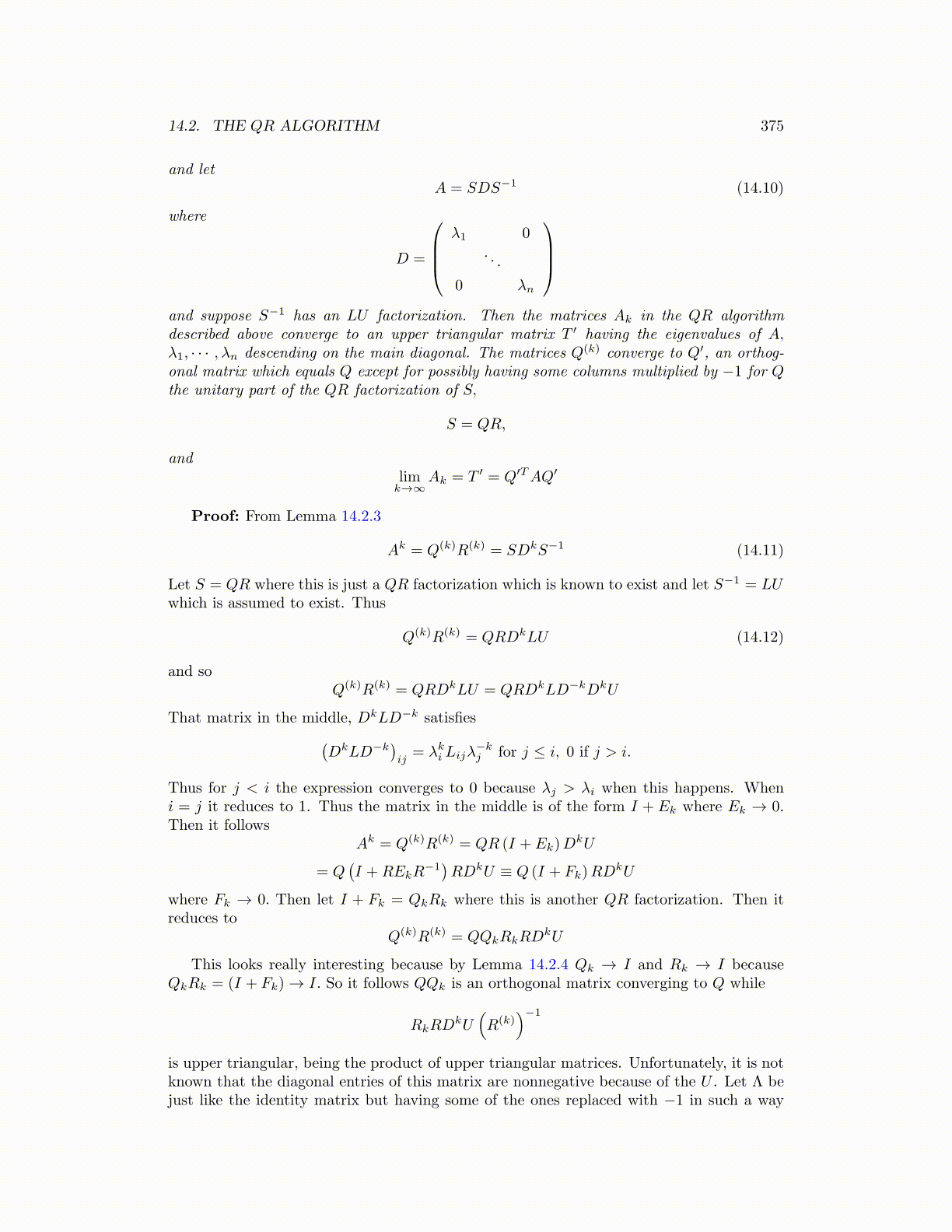
14.2. THE QR ALGORITHM 375
and letA = SDS−1 (14.10)
where
D =
λ1 0
. . .
0 λn
and suppose S−1 has an LU factorization. Then the matrices Ak in the QR algorithmdescribed above converge to an upper triangular matrix T ′ having the eigenvalues of A,λ1, · · · , λn descending on the main diagonal. The matrices Q(k) converge to Q′, an orthog-onal matrix which equals Q except for possibly having some columns multiplied by −1 for Qthe unitary part of the QR factorization of S,
S = QR,
andlimk→∞
Ak = T ′ = Q′TAQ′
Proof: From Lemma 14.2.3
Ak = Q(k)R(k) = SDkS−1 (14.11)
Let S = QR where this is just a QR factorization which is known to exist and let S−1 = LUwhich is assumed to exist. Thus
Q(k)R(k) = QRDkLU (14.12)
and soQ(k)R(k) = QRDkLU = QRDkLD−kDkU
That matrix in the middle, DkLD−k satisfies(DkLD−k
)ij= λki Lijλ
−kj for j ≤ i, 0 if j > i.
Thus for j < i the expression converges to 0 because λj > λi when this happens. Wheni = j it reduces to 1. Thus the matrix in the middle is of the form I + Ek where Ek → 0.Then it follows
Ak = Q(k)R(k) = QR (I + Ek)DkU
= Q(I +REkR
−1)RDkU ≡ Q (I + Fk)RD
kU
where Fk → 0. Then let I + Fk = QkRk where this is another QR factorization. Then itreduces to
Q(k)R(k) = QQkRkRDkU
This looks really interesting because by Lemma 14.2.4 Qk → I and Rk → I becauseQkRk = (I + Fk) → I. So it follows QQk is an orthogonal matrix converging to Q while
RkRDkU(R(k)
)−1
is upper triangular, being the product of upper triangular matrices. Unfortunately, it is notknown that the diagonal entries of this matrix are nonnegative because of the U . Let Λ bejust like the identity matrix but having some of the ones replaced with −1 in such a way